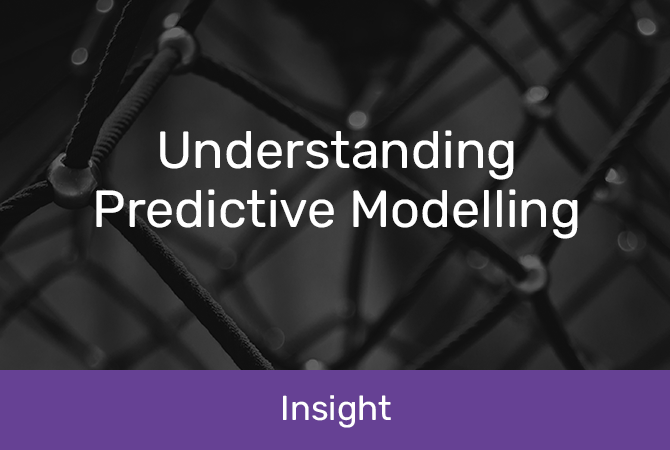Understanding Predictive Modelling
How does it work, and how can it help your business?
For the less technically-minded among us, predictive modelling seems like magic. Somehow, data is pulled in, analysed and turned into eerily accurate forecasts. Of course, it’s not magic – it’s maths.
A mathematical equation expresses a relationship between variables. A predictive model uses these equations to make sense of massive datasets, 'learn' the variables that correspond with specific outcomes and make predictions based on that information.
If it’s done well, predictive modelling is a powerful tool for business leaders. No wonder it’s being used in an increasing number of applications – from supply chain management to equipment maintenance.
Here’s what you need to know:
 Mathematical Models
Mathematical Models
In mathematics, a model is an equation that shows a relationship between two or more variables. The equations themselves aren’t necessarily complicated. For example: if R is revenue, P is price, and Q is quantity sold, the equation R = P x Q can be used to calculate the revenue for a particular product. The price multiplied by the number sold equals the revenue generated – it's a simple concept expressed as an equation.
The models used for analysis and forecasting are much more complex – variables may be squared or cubed, different equations may interact, and they’re not as easy to explain to the non-expert.
 Using Mathematical models to predict the future
Using Mathematical models to predict the future
So, how do we go from R = P x Q to results that can inform decision-making? Predictive modelling involves using past data to determine what will happen in the future. AI and machine-learning programmes usually involve predictive modelling in some form – the applications use models to sift through past data and learn how certain variables connect. For example, an AI model might compare online browsing behaviour with sales – which behaviours correlate with the most sales? Is there a specific pattern of behaviour in common? That information is then applied to future customers and used to target advertising in the right places.
With predictive modelling, the key is regular feedback and testing – data gathered and tested years ago, or even months ago, won’t necessarily apply to current market or economic conditions. The more frequently you update your models, the more accurate they will be.
Ultra-modern AI modelling programmes are updated continuously – so they use real-time data to forecast future trends. In today’s variable, fast-moving economic environment, that kind of flexible modelling can be incredibly valuable.
 What can predictive modelling do for you?
What can predictive modelling do for you?
How could predictive modelling be used in your business? It depends, of course, on what you do, your access to accurate data and your forecasting needs.
Here are some of the ways you can apply predictive modelling in a business setting:
Supply chain optimisation
Predictive modelling is a crucial element of supply chain management. If you don’t know how much product to order, when and where to purchase it or when it will arrive, your business is in trouble. Unsold inventory is a financial drain, delays can lead to lost sales, and ordering needs to keep up with fast-moving trends. In this area, predictive modelling is growing more and more sophisticated, with applications integrating real-time and third-party data and tracking individual items across the globe.
Marketing
Predicting buyer behaviour is big business. AI modelling can be used to track and analyse browsing behaviour and target specific types of customers. It predicts which customers are likely to churn and targets them with retention strategies. It also tests marketing strategies and specific pieces of content.
Fraud detection
In the age of online shopping, fraud is an ever-present risk. Predictive modelling is used to analyse bank transactions leading to fraudulent activity, so banks can be alert for future suspicious behaviour. If your bank has ever called you about an offshore purchase or an unusual series of smaller transactions, predictive modelling probably played a part.
Risk management
Insurance providers were some of the earliest users of predictive modelling. Algorithms determine risk levels for vehicles, people and property, so insurers can set rates fairly. Similarly, lenders use predictive modelling to assess the risk level of businesses applying for loans.
Equipment maintenance
Want to know when your equipment needs a tune-up? Predictive modelling can help. In businesses with large fleets and crucial equipment, modelling applications use past data – and sometimes data collected from the machines themselves – to forecast and schedule maintenance. This minimises downtime and keeps expensive, vital equipment up and running.
 Get the experts on your side
Get the experts on your side
It’s useful to build your understanding of predictive modelling, but it doesn’t mean you’ll suddenly be able to create a model from scratch. That’s where we come in – predictive modelling and analytics are our specialties, and we have decades of experience behind our expertise. We can work with you to build predictive models for your business, create analytics programmes and give you the data you need to make better decisions every single day.
Ready to get started? Talk to the Datamine team now.
















































